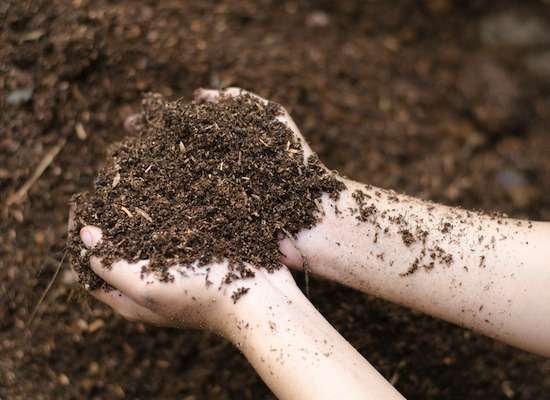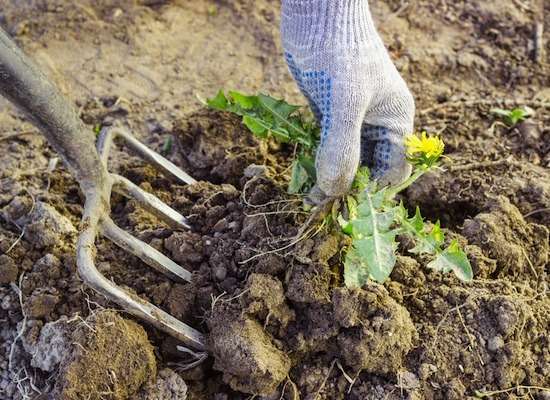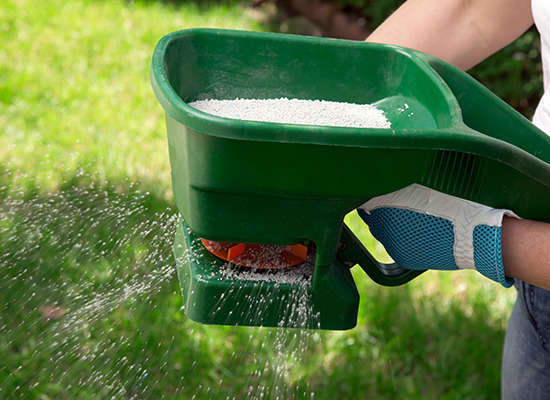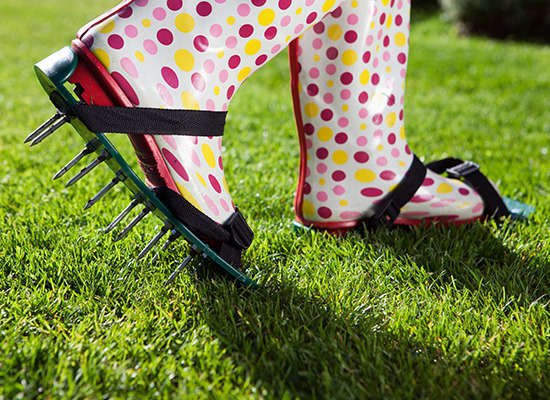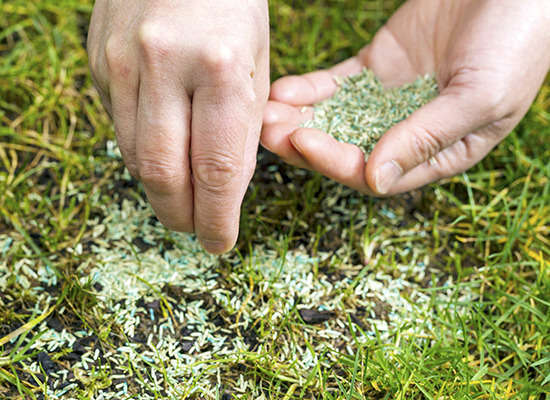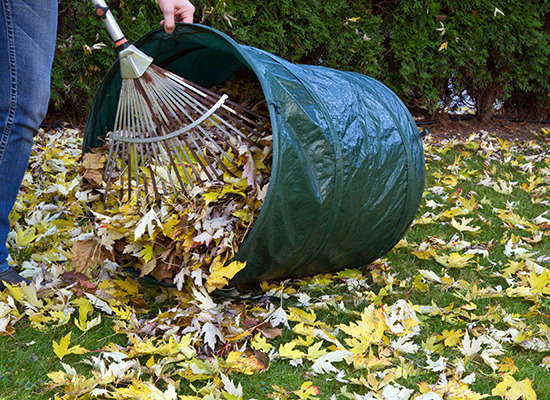As the cool weather sets in, so enters the most crucial season for yard work: autumn. Now is the best time of year to lay down new grass seed and repair any damage to your lawn that may have occurred over the summer. Tasks like weeding and pruning are important, and they're much more enjoyable in these cooler fall days than they will be in a few weeks, when you'll have to wrestle with frozen and dead foliage. The earlier you start your autumn maintenance, the more manageable your lawn will be come spring. What you do now to winterize and protect your lawn from the frost and chill to come will determine how it rebounds. To make sure you're prepared, follow our step-by-step guide to winterizing your lawn.
1. Check pH Levels
Before you start winter prep work,
of your soil. A neutral pH level is key to a healthy lawn, otherwise your lawn can thin out over time. Treat acidic patches with lime products; areas that are too alkaline can be corrected with sulfur treatment.
2. Remove Weeds
When preparing your yard for the harsh winter weather, you want to safeguard only the plants that matter, so jettison those weeds! Because perennial weeds compete for nutrients with the rest of your lawn, it's important to
before the long winter.
3. Spread Fertilizer
Fertilizers formulated for
have a higher potassium content than their warm-weather counterparts. They're designed specifically to strengthen plants under stress. Using a spreader, apply the fertilizer evenly over the grass. Beware of overfertilizing, as adding too much can burn the lawn.
4. Aerate to Refresh the Lawn
allows air, water, and nutrients to reach down to the roots. This is especially important for high-traffic lawns, which can suffer from thatch buildup if left untreated.
5. Spread Grass Seed
If you live in northern climates,
to spread cool-weather grass seed. The best time to foster new growth is when daytime temperatures are between 60 and 70 degrees Fahrenheit.
6. Cover Plant Beds
To maintain your flower and vegetable beds in the winter, it's important to insulate the topsoil by adding mulch, planting a cover crop, or covering the bed with burlap. When possible, repot small plants and bring them indoors to survive.
need cold weather in order to bloom in the spring, but tender bulbs like calla lilies may need to overwinter indoors.
7. Continue to Remove Debris
Leaf removal isn't the most glamorous of fall tasks, but it's certainly
. Raking will also help to remove thatch, the layer of dead grass on top of the lawn, which can prevent water and nutrients from reaching the roots.
For more from BobVila.com:
Follow Bob Vila on Twitter: www.twitter.com/bobvila
Support HuffPost
Our 2024 Coverage Needs You
Your Loyalty Means The World To Us
At HuffPost, we believe that everyone needs high-quality journalism, but we understand that not everyone can afford to pay for expensive news subscriptions. That is why we are committed to providing deeply reported, carefully fact-checked news that is freely accessible to everyone.
Whether you come to HuffPost for updates on the 2024 presidential race, hard-hitting investigations into critical issues facing our country today, or trending stories that make you laugh, we appreciate you. The truth is, news costs money to produce, and we are proud that we have never put our stories behind an expensive paywall.
Would you join us to help keep our stories free for all? Your contribution of as little as $2 will go a long way.
Can't afford to donate? Support HuffPost by creating a free account and log in while you read.
As Americans head to the polls in 2024, the very future of our country is at stake. At HuffPost, we believe that a free press is critical to creating well-informed voters. That's why our journalism is free for everyone, even though other newsrooms retreat behind expensive paywalls.
Our journalists will continue to cover the twists and turns during this historic presidential election. With your help, we'll bring you hard-hitting investigations, well-researched analysis and timely takes you can't find elsewhere. Reporting in this current political climate is a responsibility we do not take lightly, and we thank you for your support.
Contribute as little as $2 to keep our news free for all.
Can't afford to donate? Support HuffPost by creating a free account and log in while you read.
Dear HuffPost Reader
Thank you for your past contribution to HuffPost. We are sincerely grateful for readers like you who help us ensure that we can keep our journalism free for everyone.
The stakes are high this year, and our 2024 coverage could use continued support. Would you consider becoming a regular HuffPost contributor?
Dear HuffPost Reader
Thank you for your past contribution to HuffPost. We are sincerely grateful for readers like you who help us ensure that we can keep our journalism free for everyone.
The stakes are high this year, and our 2024 coverage could use continued support. If circumstances have changed since you last contributed, we hope you’ll consider contributing to HuffPost once more.
Already contributed? Log in to hide these messages.
